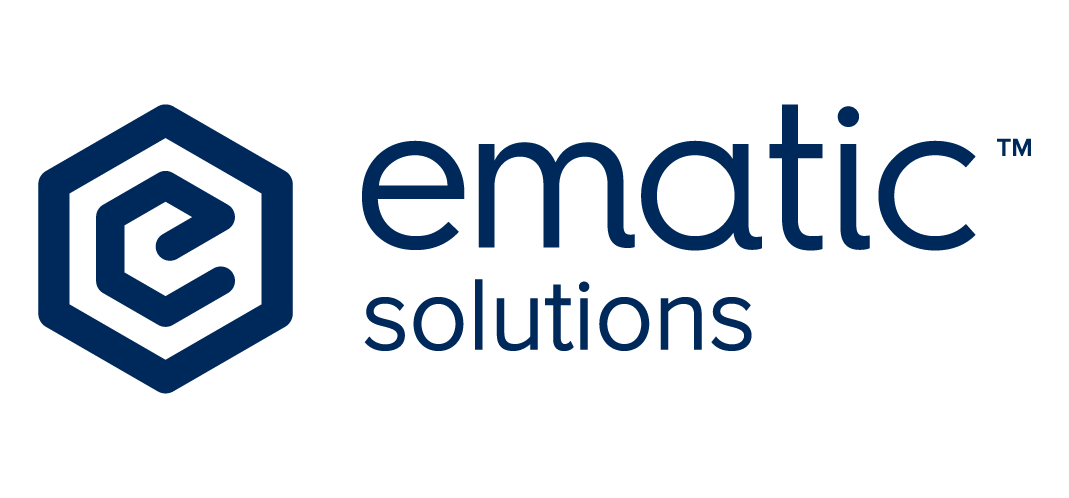How to Read Google Search Console (GSC) Data
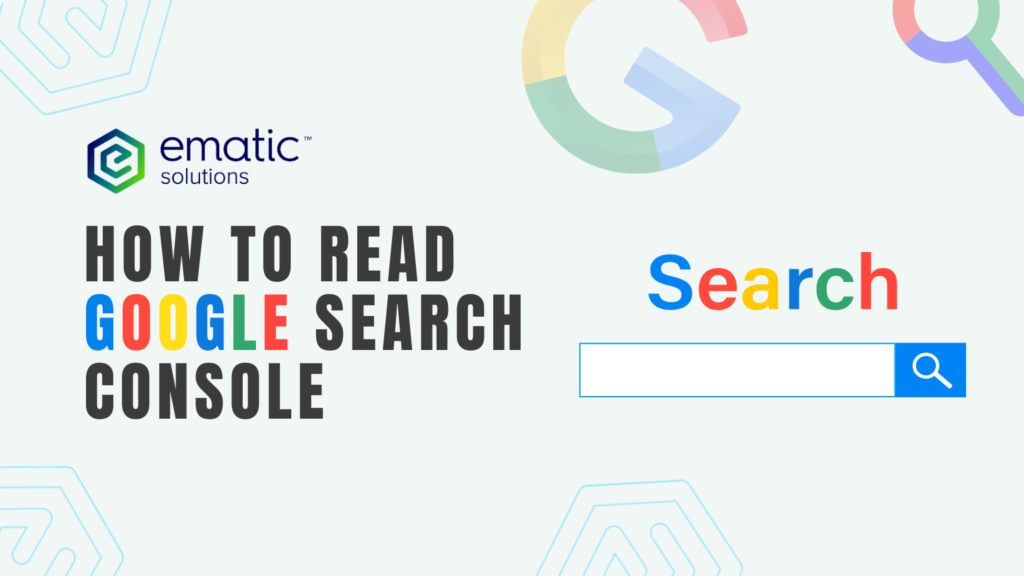
Google Search Console (GSC) is a free tool from Google that helps website owners understand how their site appears in search results. If you have an online store and haven’t set up GSC yet, you should create it now to start tracking your site’s performance. Knowing how to read GSC data can help improve your site’s visibility. This guide will break down the key reports in GSC and how to use them to optimize your website. 1. Performance Report – Measuring Website Visibility The Performance report provides insights into how users find your website and interact with it. This report is crucial for understanding your site’s visibility and identifying opportunities for optimization. The Performance report shows how your site is performing in Google Search. Here’s what to focus on: You can also view the exact queries users are searching for and their current rankings in Google SERPs. This helps you assess how to improve your website and better align it with user intent. The image below displays our organic traffic performance over time, helping us assess whether our website is improving, declining, or remaining stagnant. As shown, we can clearly see a significant improvement compared to last year’s performance. What you can do: 2. Indexing Report – Ensuring Pages Are Indexed The Indexing Report in Google Search Console helps you understand how Google crawls and indexes your website. The main categories include: Pages The Pages section under the Indexing Report helps you understand which pages on your site are indexed by Google and which ones are not. This section is crucial because if a page isn’t indexed, it won’t appear in Google’s search results. Key Metrics in the Pages Report Common Reasons Pages Are Not Indexed GSC categorizes unindexed pages into different statuses. Here’s what they mean and how to fix them: 1. Discovered – Currently Not Indexed 2. Crawled – Currently Not Indexed 3. Excluded by ‘Noindex’ Tag 4. Blocked by Robots.txt 5. Duplicate Without User-Selected Canonical 6. Alternate Page with Proper Canonical Tag 7. Soft 404 8. Page with Redirect How to Use the Pages Section Effectively ✅ Check for drops in indexed pages – A sudden decrease in indexed pages could indicate indexing issues.✅ Fix non-indexed pages – Review the reasons and resolve them to ensure important pages get indexed.✅ Regularly inspect new pages – Use the URL Inspection Tool to confirm if a new page is indexed.✅ Ensure proper redirects and canonicalization – Avoid duplicate content issues by correctly setting up canonicals. Understanding and optimizing the Pages section helps ensure that Google indexes the right pages, improving your site’s visibility in search results. Sitemaps A sitemap is a file that lists all the important pages on your site, helping Google discover and index them more effectively. The Sitemaps Report in GSC shows which XML sitemaps Google has processed and whether there are any errors. Key Metrics in the Sitemaps Report: How to Use It: Removals The Removals section allows you to temporarily remove URLs from Google’s search results. Here’s what you need to know: What You Can Do in the Removals Section When to Use It ✅ A page has sensitive information and needs to be removed from search results quickly.✅ A deleted product or outdated content is still appearing in search.✅ You’ve updated content, but the cached version shows old information. Important Notes 3. Page Experience Report – Evaluating User Experience Google prefers websites that provide a smooth user experience. This report covers: Example LCP issues exceeding 4 seconds on mobile Scenario Problem: The website owner checks the Google Search Console’s Core Web Vitals report and finds that 408 URLs are marked as poor due to LCP (Largest Contentful Paint) issues exceeding 4 seconds on mobile. The report shows no URLs in the “Good” or “Need Improvement” categories, indicating severe performance issues. Possible Causes: Action Plan: Expected Outcome: Example good HTTPS Report 4. Links Report – Understanding Backlinks and Internal Links Links are important for SEO, and this report helps you see: How to Use It: 5. Manual Actions & Security Issues – Avoiding Google Penalties. If Google detects violations of its guidelines, you’ll see warnings here: Scenario: Your traffic suddenly drops, and Google Search Console shows a manual action for “thin content” on multiple pages. Google considers these pages low quality. Adding useful content and submitting a reconsideration request can restore rankings. How to Use It: Final Thoughts Google Search Console provides valuable insights that can improve your site’s performance in search results. By regularly checking these reports, fixing errors, and optimizing content, you can boost your site’s rankings and attract more visitors. So if you’re new to GSC, this will help you make data-driven decisions and grow your online presence even more. Want to know more about your site performance? Contact Us Now for a Free Website Audit!
Internal Linking: A Simple Strategy for Better SEO
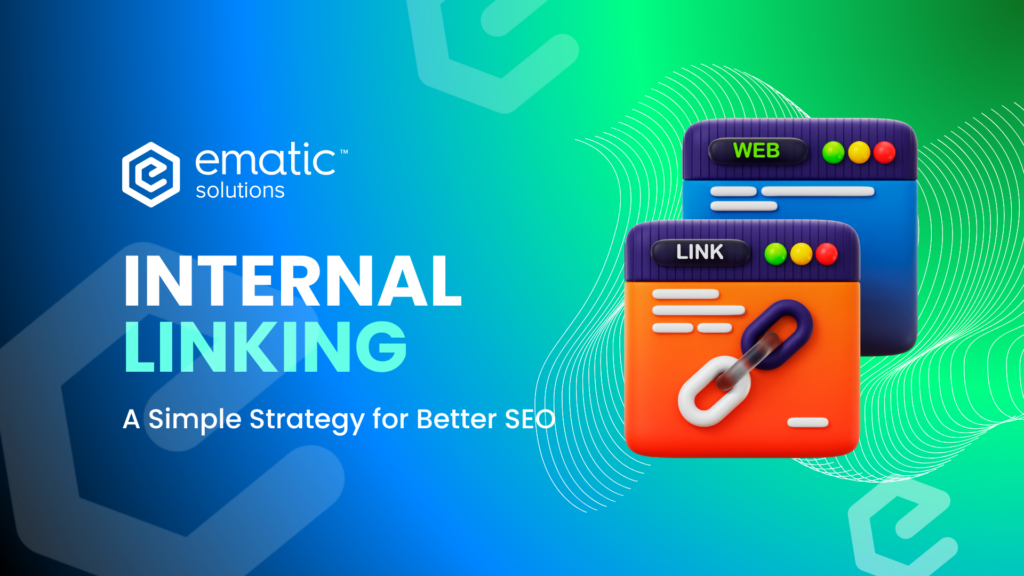
Internal linking is a simple yet powerful SEO strategy that often goes unnoticed. By linking pages within your website, you create a clear path for visitors to navigate your content while helping search engines understand your site’s structure. When done right, it improves user experience, boosts rankings, and strengthens your overall SEO. This guide will show you why internal linking is essential and how to make the most of it. What Is Internal Linking? Internal linking is simply linking from one page on your website to another. The main purpose is to help users explore related content and guide search engines in understanding your site. Here is a simplified illustration of what internal links look like: For example, if you have a blog post on “The Best Winter Jackets,” and you link to another post on “How to Layer for Winter,” that’s an internal link. Think of your website like a web, where each page is connected to another. The stronger these connections, the better the experience for users—the more Google will love your site. Internal Links vs. External Links: What’s the Difference? Internal links connect pages on your own site to make it easier for both users and search engines to find their way around. External links, however, point to other websites and can build credibility by linking to trusted sources. Both types of links are important for SEO—internal links improve navigation and user experience, while external links add value and help boost your site’s authority. Types of Internal Links 1. Navigation Links These are the links in your website’s menu, sidebar, or footer that help visitors get to key pages like “Shop,” “Blog,” or “Contact Us.” 2. Contextual Links These are the links you add within your content, usually using anchor text (the clickable text). They’re the most valuable for SEO because they provide context and guide users to relevant pages. Example:“Stay ahead in 2025 with the best SEO tools to optimize your website and boost rankings.” 3. Breadcrumb Links Breadcrumb links are like little signposts that show users where they are on your site and make it easy for them to navigate back. You’ll usually see them at the top of the page, right below the main menu. It might look something like this: Home > Blog > SEO > Internal Linking Each part is clickable, so users can jump back to any section they want without having to hit the back button or search through the menu. 4. Image Links Clickable images that link to other pages also count as internal links. Just make sure they have alt text so search engines can understand what they’re about. 7. Related Post Links These are links that appear at the end of blog posts, suggesting other related posts to keep users engaged. These help drive traffic to other content and can keep visitors on your site longer. 9. Call-to-Action (CTA) Links CTA links are a type of internal link designed to encourage users to take action, such as making a purchase, signing up for a newsletter, or downloading an ebook. These links are usually prominent, styled as buttons, and placed strategically on pages to guide users towards conversion goals. Why Internal Linking is Important for SEO? It Helps Search Engines Discover and Index Your Pages Search engines use bots to crawl your site, following links to find and index pages. If a page isn’t linked anywhere, it might not even show up in search results. Internal links ensure that all your pages are accessible and properly indexed. It Passes Authority Between Pages Some pages on your site naturally have more authority—like your homepage. By linking from these stronger pages to others, you help spread that authority (also known as “link juice”), improving rankings for important pages. If your homepage gets a lot of backlinks, linking from there to a new product page can help it rank better in search results. It Keeps Visitors on Your Site Longer Ever clicked on an interesting link in an article and ended up reading five more posts? That’s the power of internal linking! It encourages visitors to stay longer, which reduces bounce rates and signals to Google that your content is valuable. It Helps Rank Important Pages Higher If there’s a page you really want to rank—like a key product or service page—linking to it frequently from relevant content can signal to Google that it’s an important page. How to Set Up an Internal Linking Strategy? Building a strong internal linking strategy is key to getting the most out of your website’s SEO potential. Here’s how to set it up: 1. Start with Your Most Important Pages Focus on linking to your most valuable pages first. These could be high-conversion pages like product pages, key service pages, or cornerstone content. Linking to these often helps boost their visibility and SEO rankings. Think of these pages as your site’s “powerhouses” that need more internal links. 2. Create a Logical Structure Organize your content in a way that makes sense for both users and search engines. Group related pages into categories and use internal links to connect them. For instance, if you have a blog post about SEO, link to other related posts, guides, or services on SEO. This helps keep visitors engaged and encourages them to explore more. Example: Main Guide: “The Ultimate SEO Guide” 3. Use Natural, Descriptive and Keyword-Rich Anchor Text Anchor text is the clickable part of a hyperlink. Instead of using generic phrases like “click here,” use descriptive or keyword-rich text that tells users and search engines what the linked page is about. ❌ Poor Anchor Text: “Click here to read more.”✅ Good Anchor Text: “Learn more in our Beginner’s Guide to SEO.” 4. Link to Deep Pages, Not Just the Homepage Don’t just link to your homepage or top-level pages. Make sure to link to deeper, less-visited pages, like blog posts or category pages. These pages might not get a lot of natural traffic, but by linking
How Backlinks Can Boost Your Organic Traffic
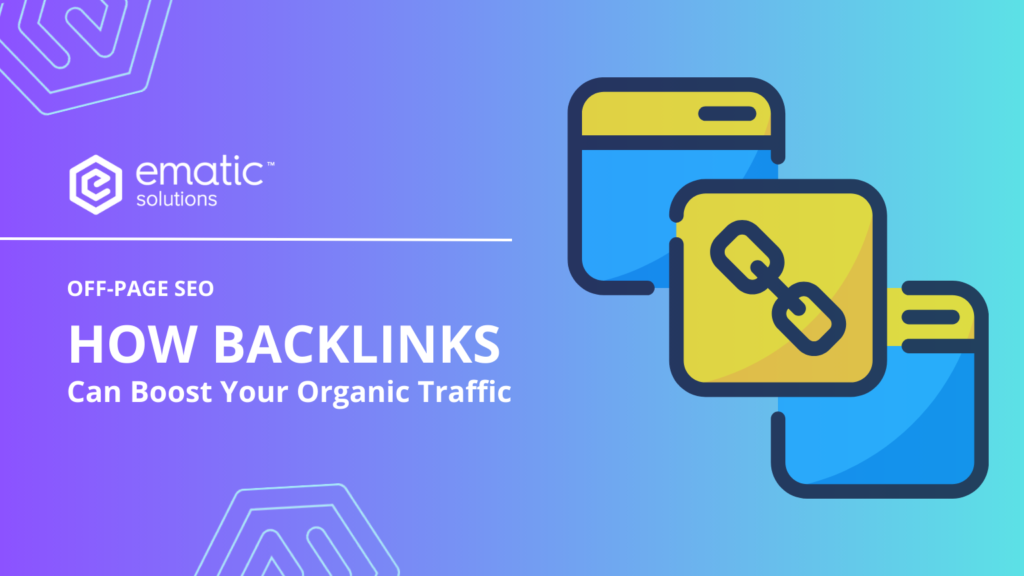
Backlinks are essential for improving your website’s visibility and driving organic traffic. Let’s dive deeper into what backlinks are, why they matter, and how you can effectively use them to boost your site’s performance. What is a Backlink? A backlink is a link from one website to another. Think of it as a recommendation or a vote of confidence. When a reputable website links to your content, it signals to search engines that your site is trustworthy and valuable. How Do Backlinks Affect Domain Authority? Domain Authority (DA) is a metric developed by Moz that predicts how well a website will rank on search engine result pages (SERPs). It ranges from 1 to 100, with higher scores indicating a greater ability to rank. Backlinks are one of the key factors influencing DA. It also helps boost your organic traffic. The higher your DA, the easier it will be to rank on Google Search. Here’s why. Credibility and Trustworthiness Backlinks from authoritative and relevant websites signal to search engines that your site is credible and trustworthy, positively impacting your DA. Increased Organic Traffic Backlinks can drive direct referral traffic to your website, which can indirectly improve your DA by showing search engines that your site is popular and engaging. Improved SERP Ranking As DA increases due to strong backlinks, your website becomes more likely to rank higher on search engine result pages (SERPs). Anchor Text Optimization When backlinks use relevant anchor text, it further helps search engines understand your content, contributing to better DA and rankings. Long-Term Benefits Backlinks provide a cost-effective strategy for sustained organic growth, as they keep benefiting your site without ongoing costs and unlike paid advertising, the benefits of backlinks are long-lasting. Once you have earned a backlink, it continues to contribute to your site’s SEO and traffic over time. How to Build High-Quality Backlinks Create Valuable Content: Produce high-quality, informative, and unique content that others want to link to. Guest Posting: Write for reputable sites in your industry and include backlinks to your site. Outreach and Networking: Contact influencers and bloggers in your niche to share your content and build relationships. Use Social Media: Share your content on social platforms to encourage others to link to it. Monitor and Adjust: Use tools like Google Search Console to track your backlinks and disavow harmful links. Tools to Help with Backlink Building Tool Features Pricing SEMRush Comprehensive suite of SEO tools, including backlink analysis, competitor research, and outreach management. Helps find backlink opportunities, track backlinks, and monitor competitors. Plans start at $139.95/month. Ahrefs Powerful backlink analysis tools with detailed insights into backlink profiles. Supports finding link-building opportunities and tracking progress. Plans start at $99/month. Moz Tools for link building, keyword research, and site audits. The Link Explorer tool analyzes backlink profiles and identifies new opportunities. Free for checking up to 3 domains per day. Plans start at $99/month. SE Ranking User-friendly SEO platform offering backlink tracking, website audit, and keyword rank tracking. Includes backlink checker and competitor backlink analysis. Plans start at $39/month. Common Mistakes in Backlink Building Backlink building is a crucial component of SEO, but many website owners make common mistakes that can harm their site’s ranking and reputation. Here are some common pitfalls to avoid: Getting low-quality backlinks from spammy or irrelevant websites can harm your ranking. Focusing on quantity over quality, leading to a poor link profile. Ignoring anchor text optimization, resulting in unnatural linking patterns. Not maintaining links, leading to broken or outdated links. Targeting the wrong audience or niche for backlinks, wasting efforts and missing potential traffic. — Do you think backlinks are important? I’d say they’re essential. Backlinks play a crucial role in your SEO strategy, helping to improve search engine rankings, drive referral traffic, build credibility, speed up indexing, and foster industry connections. By focusing on securing high-quality backlinks from reputable sources and leveraging the right tools, you can significantly increase your organic traffic and achieve sustainable success. Would you like more specific strategies on how to build backlinks for your website? Contact us for a FREE SEO audit today and get personalized insights to improve your online presence!
Long-Tail Keywords: How to Effectively Use Them in SEO
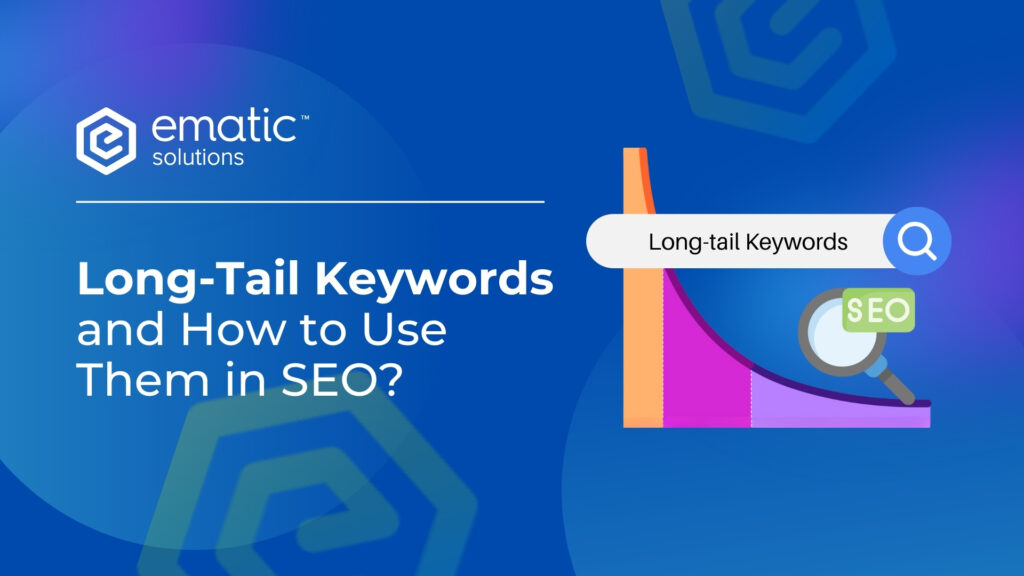
What are Long-Tail Keywords? Long-tail keywords are specific phrases that consist of three or more words and are highly focused on a particular topic or audience. Unlike short-tail keywords, which are broader and more competitive (e.g., “shoes”), long-tail keywords target niche markets (e.g., “comfortable walking shoes for women”). These keywords may have lower search volumes, but they often attract highly relevant traffic and are easier to rank for in search engines. They reflect what users are specifically searching for and help businesses connect with their ideal customers. Example of Long-Tail Keywords Below are examples of how people often use them when searching: Short-Tail Keyword: “shoes”Medium-Tail Keyword: “running shoes”Long-Tail Keyword: “what is the best running shoe for beginners” Additional examples: Comparing Short-Tail vs. Medium-Tail vs. Long-Tail Keywords Aspect Short-tail Keyword Medium-tail Keyword Long-Tail Keyword Keyword “laptops” “laptops for students” “best laptops for students under $500” Search Volume High Moderate Low Competition High Moderate Low Search Intent Semi Semi-specific Highly specific Conversion Potential Low Medium High Why Long-Tail Keywords are Important in SEO? A 2020 study by Backlinko analyzed over 1 billion search queries and found that long-tail keywords have a 3-5% higher click-through rate compared to head terms. This highlights the significant impact the keywords in driving meaningful engagement and conversions. Here are some reasons why targeting long-tail keywords is necessary for SEO: Search Intent Example of Keyword Audience Behaviour Informational “what is a black tie dress code” Seeking knowledge or understanding about dress codes, typically without immediate intent to buy. Commercial “summer dress for women” Comparing options or researching product categories to find the best match before making a decision. Transactional “buy dress online Malaysia” Ready to purchase and are looking for a platform or store to complete their transaction. Navigational “Zara outlets in Malaysia” Searching for nearby physical locations to meet their immediate needs. Local “costume rental shop near me” Specifically looking for a known brand or store location, intending to visit or browse directly. How to Effectively Use Long-Tail Keywords for SEO? Mastering the use of long-tail keywords requires a mix of research, content creation, and strategic optimization. Each step plays a vital role in maximizing their impact. To find the best long-tail keywords and effectively implement your strategy, doing any of these steps is considered a must: Step Action Examples Conduct Thorough Keyword Research Use tools like Google Keyword Planner, SE Ranking, or Ahrefs to find relevant long-tail keywords. Focus on search intent and relevance. Look for “question-based” keywords. “How to choose the best running shoes for beginners” Create Specific and Valuable Content Incorporate long-tail keywords naturally into your content. Create blogs, product comparisons, tutorials, or listicles. Blog post titled “How to Choose Comfortable High-Heeled Shoes for Weddings” Optimize Meta Tags and Headings Include long-tail keywords in meta titles, descriptions, and H1 or H2 headings. Ensure they are engaging and descriptive. Meta title: “Shop Organic Skincare for Sensitive Skin Online” (instead of just “Organic Skincare Products”) Leverage FAQ Sections Answer common questions related to your long-tail keywords. This can help with featured snippets. FAQ: “Best laptops for gaming under $1,000” with answers addressing battery life, processor, storage, etc. Use Keywords in Alt Text and URLs Optimize images with descriptive alt text including long-tail keywords. Create SEO-friendly URLs. Alt text: “A young woman using an ergonomic chair for back pain relief” URL: “/ergonomic-office-chairs-for-back-pain” 3 Things to Avoid in Targeting Long-Tail Keywords When working with long-tail keywords, certain pitfalls can hinder your success. Therefore, avoiding these common mistakes will help you refine your strategy: How to Measure the Impact of Long-Tail Keywords Tracking and analyzing the performance of your long-tail keyword strategy ensures continuous improvement and alignment with business goals. To understand the effectiveness of your strategy, it is advisable for you to: Key Takeaways Ready to Improve Your SEO Keyword Strategy? At Ematic Solutions, we specialize in crafting data-driven SEO strategies to boost our client’s online presence. Whether you’re new to SEO or looking to optimize your existing strategy, our team is here to help. Contact us today and get a free consultation to unlock the full potential of SEO keywords for your business!
Understanding Search Intent: Top vs. Bottom of Funnel Keywords in SEO
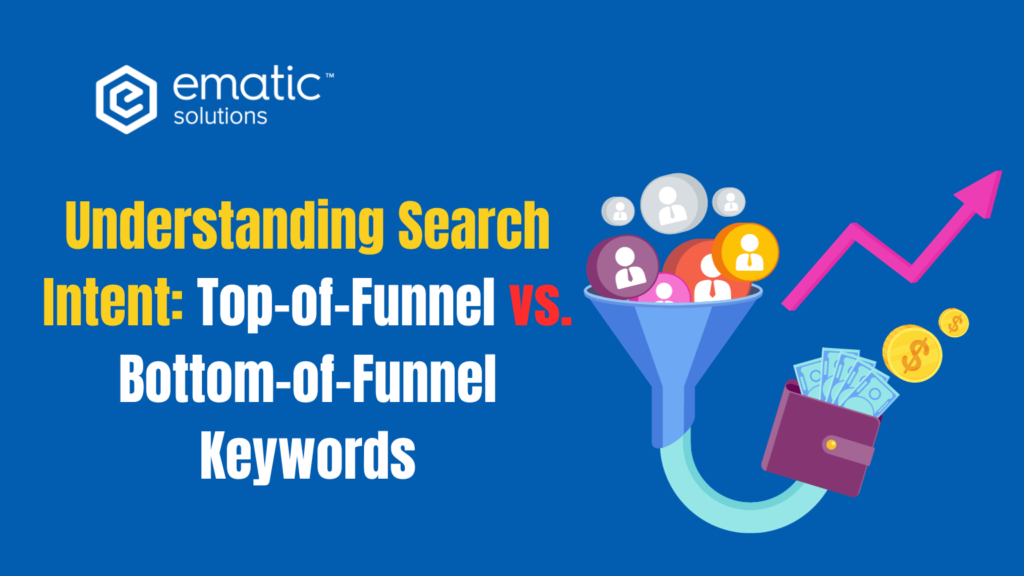
In the vast digital landscape of the internet, where information is abundant and competition is fierce, understanding the nuances of search intent is crucial for the success of any online business.
A holistic SEO checklist for 2022
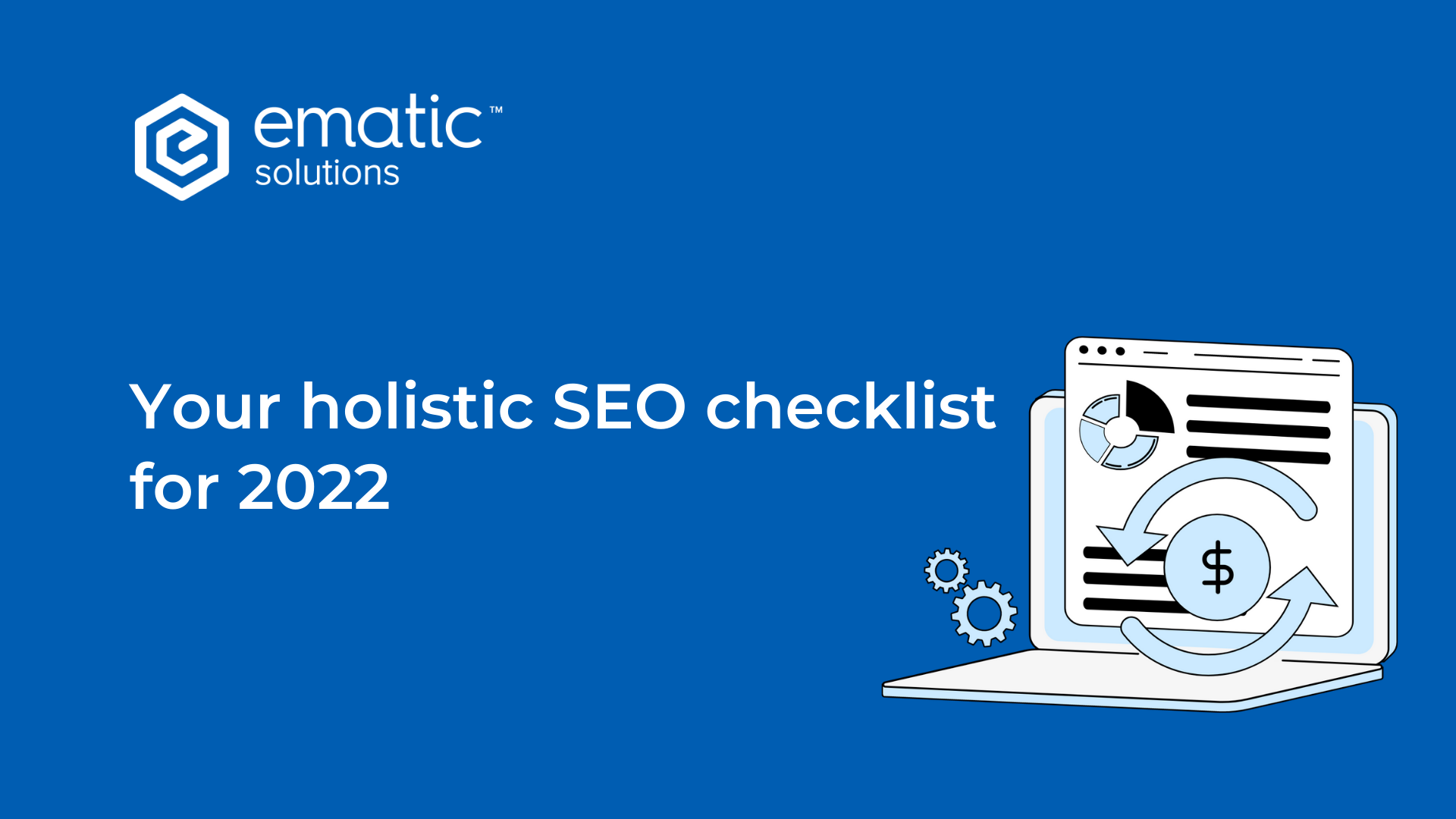
SEO is far beyond just writing content with keywords we think our potential customers may fill in those little search bars in different search engines. It encompasses a whole range of different audits, analyses, and actionable plans. But not as complicated as it may sound, the process can be divided into 6 steps, each of which has a different set of checklists that we can easily follow. Ematic has compiled those checklists below for you to have a quick look at your current SEO. In each of the steps, we also note some of the things (if any) that we do differently compared to other SEO agencies in the market. You can also contact us so that we can guide you through our own steps in a more in-depth session. Download the checklist here. Competitor Review In fact, prior to this step, the first thing we need to do is to look at ourselves in general. Some questions we may ask include: what our strategy towards SEO is, what our target market is, how we are doing with our website, whether or not some of the popular keywords related to our products/services show up in search engines, etc… Although detailed analyses of our own SEO performance will be incorporated into later steps, this quick check will probably give us a rough idea of our current state and hopefully help us set some expectations for the project. There is an old saying that goes: “He who sees through life and death will meet most success.” Indeed, when we can identify our competitors, what they have been doing, and where they are standing right now in the market, we can choose to follow best practices or decide to go our own way for differentiation. Doing competitor analysis is one of the best ways to identify customer insights through keyword research. This also helps us figure out what functions on their websites may bring the most value to their (and our) customers. The more information we obtain, the more options we have when we think about our strategy to compete. All in all, there surely is a reason why our competitors showed up in the top search results, right? At Ematic, the first thing we do when it comes to SEO is to conduct thorough research on potential competitors. Below are some headings that you can choose to follow for your own quick competitor check. What to do Research product/service categories of the competitors Research competitors’ main keywords Identify their organic search volume in the latest months Identify their organic search volume growth history Research their customer insights Identify their useful website features Technical Audit A website is a place where we showcase our products/services, direct our customer journeys, pin featured offerings, display sale promotions, or collect customer info from sign-up forms. Needless to say, it is the single most important asset for those who rely on websites to sell. As a result, helping search engines understand our products/services and customers is crucial. Only then, search engines can know who our potential customers are and suggest our website to match with their searched keywords. The list below suggests several aspects you can look into when it comes to optimizing your website for better search engine optimization. What to do Consolidate duplicate URLs URL structure Breadcrumb XML sitemap Robots.txt Robots meta tags Page 404 error Schema YMYL & EAT Core web vitals – page speed score Keyword & Content Planning Search engines were born for users to get answers to various problems in their lives. Therefore, we need to figure out exactly what problems our target audience is currently having; from that, create content that helps them identify and solve their problems through using or buying our products or services. One important thing to note is that when building content, we must first focus on bringing the RIGHT and VALUABLE information to our customers, rather than the length of the article. Even though word count is one criterion Google uses to evaluate website content, this should be the last step for optimization and improvement to meet the guideline, rather than the initial focus when starting to draft our pieces of content. Also, tactics to fool Google’s algorithm may bring short-term success. However, in the long run in case Google updates or changes its evaluation criteria (which is the thing Google does quite often), content that lacks insights into helping customers solve their problems will surely become useless and fall out of the top positions. Besides the mentioned issues, below are the steps you can follow for your keyword & content planning phase: What to do Identify keywords gap with competitors Conduct content overview (pay attention to thin content and duplicate content) Prepare content guidelines & SERP insights Prepare keyword list & suggested topics Do content writing Conduct website content monitoring On-page Optimization “How much traffic does our website have?” – This is a very easy question since we can check it every day on Google Analytics. Now, let’s tweak it a little bit: “How many landing pages on our website bring in that amount of traffic?” – This is tough, right? On average, only 5% of the landing pages on our website bring in 80% of the total traffic. The other 20% is brought in through another 25% of the landing pages. This indicates that a noticeable number of landing pages (70%) contribute 0 traffic to the website! As a result, continuously conducting on-page optimization is a must to make sure we keep bringing a good amount of traffic to our ecosystem. The principle of this phase is, therefore, to identify potential keywords and populate them in relevant articles. At Ematic, we have a special approach in this step for better management and optimization, but you can take the checklist below as the starting point. What to do Optimize heading & outline Add keywords in the page title & meta description Add potential keywords & paragraph Add Internal links Add Images Off-page Optimization An
Ematic’s Approach to SEO: Technical and Marketing Overall Focused
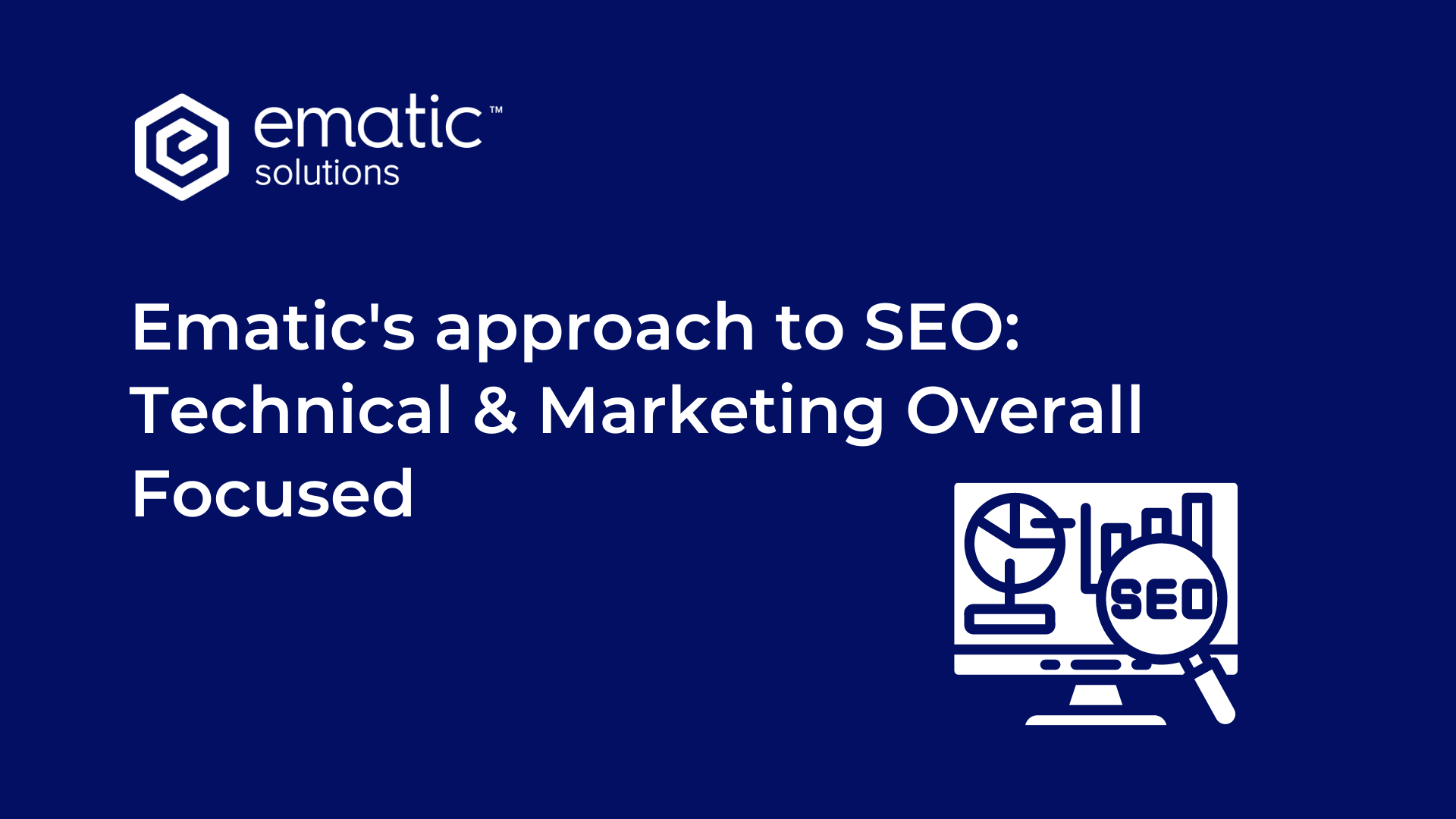
Asia currently accounts for more than half of the global internet users while continuously leading the world in economic growth. This makes building a strong online presence a must for any business. However, gone are the days of the money game when more ad spending means more awareness and conversion. The immediate impact of the Covid-19 crisis has dramatically cut down marketing expenses (as a proportion of revenue), well from an average of 11% to 6.4% in 2021. Also, social media advertising is becoming more and more expensive with skyrocketing CPAs (cost per acquisition) that gradually draw marketers away from this used-to-be gold mine that once brought in a stable and profitable flow of online traffic. As a result, CMOs start paying serious attention to a more ROI-secured set of channels, one of which is SEO.
Introducing Ematic’s new SEO service
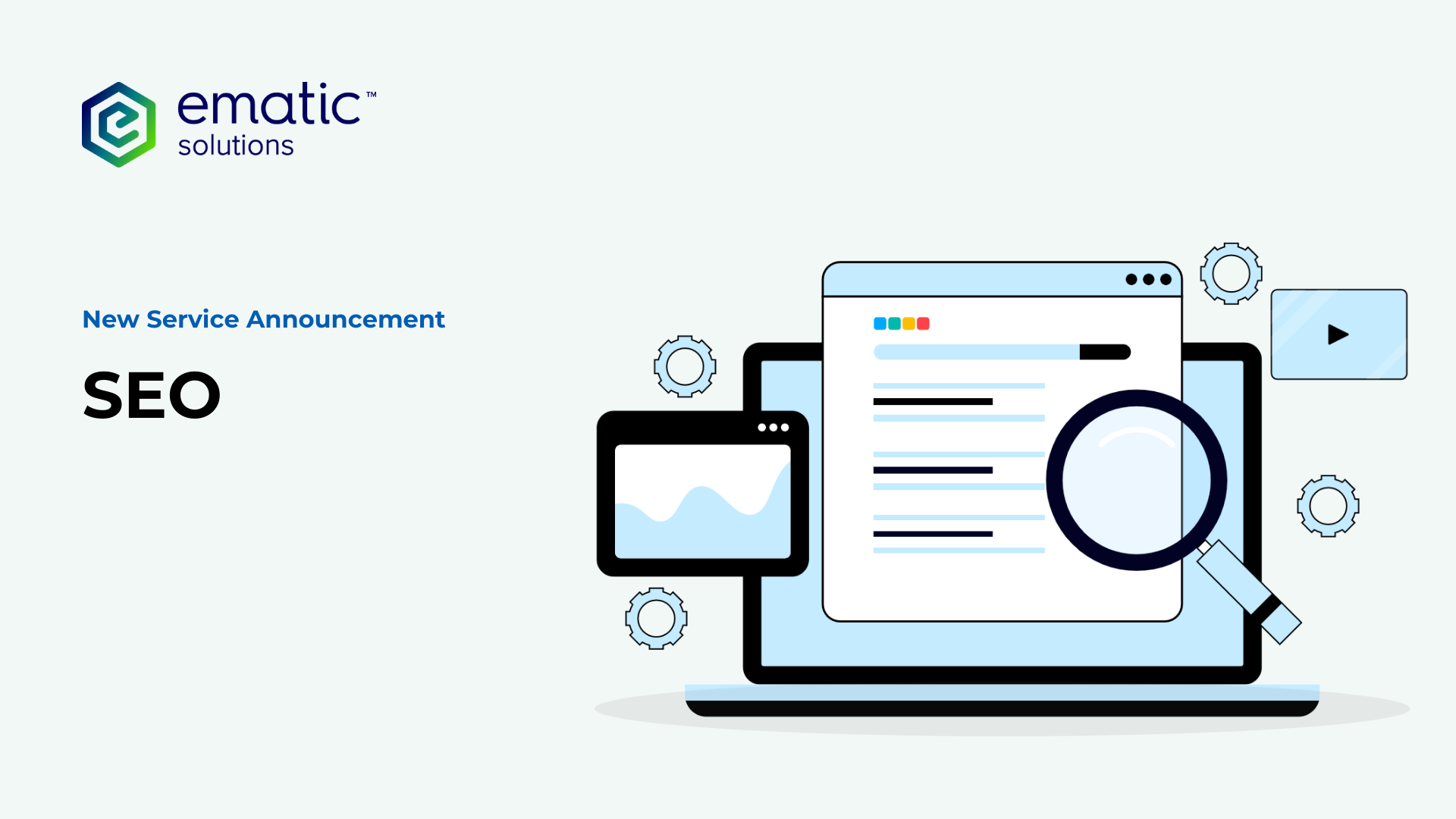
Does it occur to you that online competition is getting fierce, and it’s harder to sustain a good profit from just relying on ads to bring customers? Let us introduce you how Ematic’s new SEO service can help.
